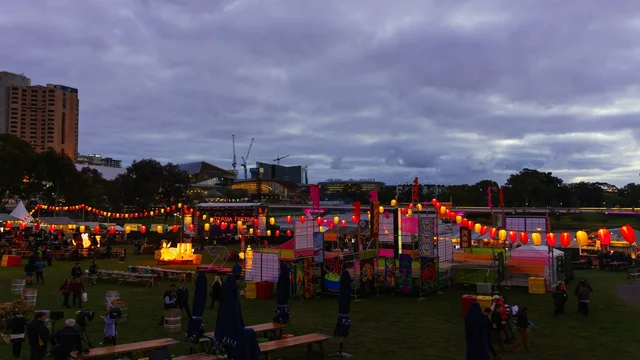Asianismo: Unveiling the Enchanting Essence of Asian Culture

Introduction:
In a world that celebrates diversity, the rich tapestry of Asian culture stands out as a vibrant and captivating masterpiece. The term “Asianismo” encapsulates the essence of this cultural treasure trove, weaving together a mesmerizing blend of traditions, art, philosophy, and spirituality. Let’s embark on a journey to unravel the enchanting mystique that defines Asianismo, exploring the diverse facets of Asian culture that have left an indelible mark on the global stage.
Cultural Diversity:
One of the most striking features of Asianismo is the incredible diversity found within the continent. From the colorful festivities of Diwali in India to the serene tea ceremonies of Japan, and the grandeur of the Chinese New Year celebrations, Asia is a mosaic of traditions, each with its unique charm. This kaleidoscope of cultural practices reflects the resilience and adaptability of Asian societies over centuries.
Artistic Expressions:
Asian art is a testament to the region’s rich history and creative ingenuity. From the intricate brushstrokes of Chinese calligraphy to the expressive movements of traditional Indian dance forms, Asianismo embraces a vast spectrum of artistic expressions. The delicate beauty of Japanese cherry blossom paintings and the bold elegance of Korean pottery all contribute to a collective artistic heritage that captivates the imagination.
Philosophical Wisdom:
Asian cultures have given birth to profound philosophical traditions that continue to influence the way people perceive the world. Concepts such as Yin and Yang, karma, and the Tao exemplify the deep-rooted wisdom embedded in Asianismo. These philosophical principles not only shape individual worldviews but also serve as bridges connecting the spiritual and material realms.
Spirituality and Religion:
Asia is a cradle of diverse religious beliefs, fostering spiritual practices that have endured for millennia. Whether it’s the tranquility of Buddhist meditation, the devotion expressed in Hindu rituals, or the reverence for nature seen in Shintoism, Asianismo is deeply intertwined with spirituality. The coexistence of various religions in the region reflects a harmonious blend of different belief systems.
Culinary Excellence:
The culinary landscape of Asia is a gastronomic adventure, with each region boasting a unique array of flavors and techniques. From the fiery spices of Thai cuisine to the delicate nuances of Japanese sushi. Asianismo tantalizes the taste buds and showcases the artistry involved in creating diverse culinary delights. Food, in Asian culture, is not just sustenance; it is a celebration of flavors and a reflection of cultural identity.
Traditional Festivals:
The heartbeat of Asianismo resonates in the vibrant tapestry of traditional festivals that grace the calendar across the continent. From the lantern-lit celebrations of the Mid-Autumn Festival in China to the spirited dance of the lion during Malaysia’s Hari Raya. These festivals are more than mere events; they are living expressions of cultural identity. They bring communities together, fostering a sense of belonging and shared heritage.
Textile Traditions:
The art of weaving and textile craftsmanship in Asia tells a story of skill, tradition, and cultural symbolism. From the intricate patterns of Indian saris to the elaborate designs of Indonesian batik. Each piece of fabric is a canvas conveying the artistic legacy of its culture. Asianismo, in this context, becomes a living testament to the meticulous craftsmanship that has been passed down through generations.
Architectural Marvels:
Asia boasts architectural wonders that echo the grandeur of its history. The awe-inspiring temples of Angkor Wat in Cambodia, the majestic Forbidden City in China, and the serene beauty of Japanese Zen gardens. All stand as testaments to the architectural brilliance embedded in Asianismo. These structures not only showcase engineering prowess but also embody spiritual and cultural significance.
Language and Literature:
The written word has been a powerful vehicle for preserving and transmitting culture in Asia. The calligraphy of Chinese characters, the poetic verses of classical Japanese literature, and the intricate tales of Indian epics all contribute to the rich literary landscape of Asianismo. Language becomes a vessel for cultural expression, reflecting the nuances and subtleties of diverse societies.
Contemporary Influences:
Asianismo is not confined to history; it thrives in the contemporary world, influencing global pop culture, fashion, and technology. K-pop’s global phenomenon, the intricate storytelling in anime, and the innovative strides in technological advancements from Asian countries all contribute to the ever-evolving narrative of Asianismo. This cultural dynamism reflects the resilience and adaptability of Asian societies in the face of modern challenges.
Conclusion:
As we continue to unveil the layers of Asianismo, it becomes evident that its enchanting essence is not static; it is a living, breathing force that evolves through time. The fusion of tradition and modernity, the celebration of diversity, and the malleability of cultural identity all contribute to telling a story that transcends borders. Asianismo is, overall, a call to action for the lack of Asian cultural beauty time, unappreciated, and uncelebrated—a legacy that continues to do so inspire and enrich the global fabric of human civilization.
For more valuable information stay connected


